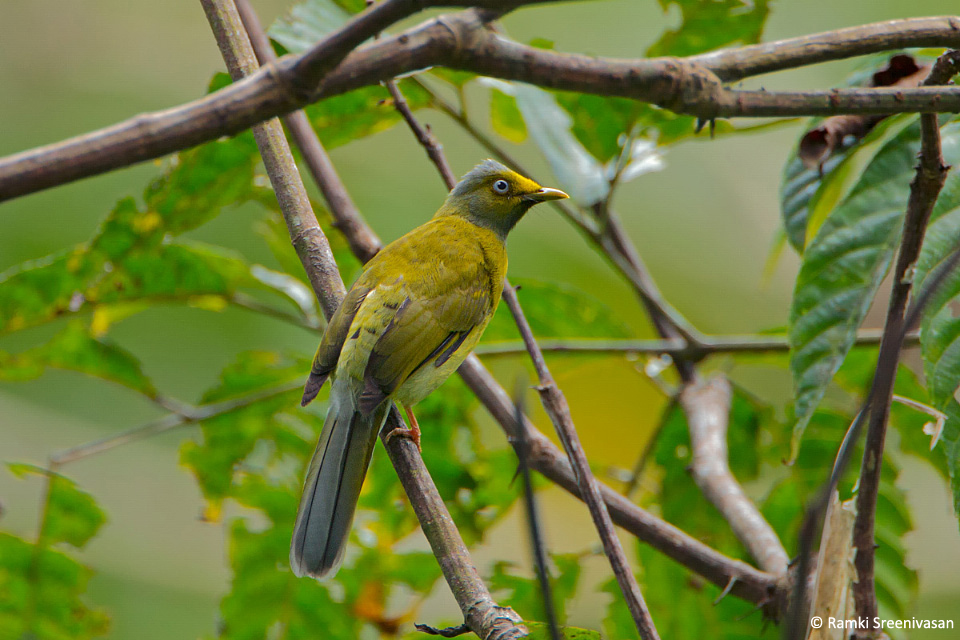The Western Ghats are internationally recognized as a region of immense global importance for the conservation of biological diversity, besides containing areas of high geological, cultural and aesthetic values. A chain of mountains running parallel to India’s western coast, approximately 30-50 km inland, the Ghats traverse the States of Kerala, Tamil Nadu, Karnataka, Goa, Maharashtra and Gujarat. They cover an area of 62,000 sq miles. It is a UNESCO World Heritage Site. This mountain chain is recognized as one of the world’s eight ‘hottest hotspots’ of biological diversity along with Sri Lanka. The forests of the Western Ghats include some of the best representatives of non equatorial tropical evergreen forests in the world. At least 325 globally threatened species occur in the Western Ghats. The globally threatened flora and fauna in the Western Ghats are represented by 229 plant species, 31 mammal species, 15 bird species, 43 amphibian species, 5 reptile species and 1 fish species. Of the total 325 globally threatened species in the Western Ghats, 129 are classified as Vulnerable, 145 as Endangered and 51 as Critically Endangered. It has at least 16 bird species endemic to the Western Ghats. India has more than 100 endemic bird species. The Western Ghats are home to some 17 percent of the world’s Tigers and about 30 percent of the world’s Asian Elephants. Approximately 245 million people live in the peninsular Indian states that receive most of their water supply from rivers originating in the Western Ghats. This tour is especially designed to offer rare and endemic bird species of the southern Western Ghats by visiting Periyar, Munnar, Valparai and Thattekad, areas falling in states of Kerala and Tamil Nadu in India.
01 Day. Kochi. An executive meets us at the airport. Transfer to Radisson Blue/similar. Overnight.
02 – 03 – 04 Days. Kochi/Periyar. Drive up hill (130 km, about 5 hrs). Bird watching in Periyar in the afternoon. Three overnights at Spice Village/similar. Periyar is the focal zone for bird specialties of the Western Ghats, as well as resident hill species and migrant birds. Potential birds include: Velvet-fronted Nuthatch, Bronzed Drongo, Greater Racket-tailed Drongo, Orange Minivet, Great Tit, Jungle Babbler, Rufous Treepie, Yellow-browed Bulbul, Malabar or Common Woodshrike, Ashy Drongo, Small Minivet, Common, Black-rumped, White-naped and Greater Flameback Woodpecker, White-bellied Treepie, Pale-billed, Nilgiri and Thick-billed Flowerpecker, Indian Golden, Black-hooded and Black-naped Oriole, Asian Fairy-bluebird, Gold-fronted Leafbird, Coppersmith, Malabar, White-cheeked and Brown-headed Barbet, various Phylloscopus (Leaf) warblers and Flycatchers, Brown-cheeked Fulvetta, etc.
05 – 06 – 07 Days. Periyar/Munnar. Drive (140 km, about 3 hrs). We reach Munnar in afternoon. Munnar is a hill station in Kerala and is known for some endemic species in the Western Ghats. Six of the total 16 endemics can be seen around Munnar. The shola-grassland eco-system is typical of Munnar. Potential species include: Nilgiri Woodpigeon, Nilgiri Pipit, Grey-headed Bulbul, Black-and-orange Flycatcher, Indian Broad-tailed Grass-warbler, Small Sunbird, Grey-breasted (now Kerala) Laughing Thrush, Nilgiri Flycatcher, Indian Rufous Babbler, White-bellied Blue Flycatcher, White-bellied Treepie, Wyanad Laughing Thrush, etc. Three overnights at Elephant Passage/similar.
08 – 09 — 10 Days. Munnar/Valparai. Drive (about 5 hrs) through Chinnar Sanctuary. It is located in the rain shadow region of the Western Ghats and is home to the Grizzled Giant Squirrel. Birds expected here include: White-naped Flameback, Jerdon’s Baza, Large Grey Babbler, White-bellied Woodpecker, Rain Quail, Blue-breasted Quail, White-rumped Shama, Streak-throated Swallow, Kerala Laughing Thrush, Speckled Piculet, Blue-bearded Bee-eater, Sirkeer Malkoha, Indian and Oriental Scops Owls, Indian Eagle-owl, Black Baza etc. Three overnight at Misty Plantation Bungalow/similar.
The area, enveloped by undulating tea plantations, is a fascinating place in Western Ghats. It is home to Liontail Macaque, Bonnet Macaque, Common Langur, Nilgiri Langur, Malabar Giant Squirrel (or Indian Giant Squirrel) and Grizzled Indian Squirrel, as well as Tiger, Gaur, Pangolin, Sambar, Spotted Deer, Barking Deer, Mouse Deer, Wild Boar, Sloth Bear, Porcupine, and Nilgiri Tahr.
11 – 12 – 13 Days. Valparai/Thattekkad. Drive (about 6 hrs) and reach Thattekad, the ideal bird watching zone in the Western Ghats. Stay in a tent camp. Thattekad Bird Sanctuary is also known as Dr Salim Ali Bird Sanctuary and is the richest bird habitat in peninsular India. Much of the forest has been converted to agricultural and plantation purposes, but the surviving habitat offers great bird diversity with more than 270 species in a relatively small area of 25 sq km. Nine endemics are found here including the rare Mottled Wood Owl, Forest Eagle-owl, Malayan Night-heron, Ceylon Frogmouth, Rusty-tailed Flycatcher, Grey-headed Bulbul and Nilgiri Woodpigeon. Three overnights at Sparrow Vale Resort/similar.
14 Day. Thattekad/Angamali Airport. Drive (45 km, about 1.5 hrs) to reach Angamali, the international airport for Cochin, to board flight back home. Farewell.
Price: GB Pounds 3,350 per person at minimum 2 paying.
Price includes: All accommodation, all meals (B,L,D), all transfers/transport, Naturalist (12 days), entry fees, and assistance throughout. The itinerary can be changed as per suggestions. No fixed departure and start on own dates. Welcome to extend the Tour and let us know what other species will you like to observe. Single or couple or more in a group will be welcome.
Price is valid till 30 May 2023.
